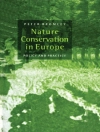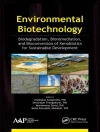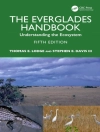Nitrous oxide gas is a long-lived relatively active greenhouse gas (GHG) with an atmospheric lifetime of approximately 120 years, and heat trapping effects about 310 times more powerful than carbon dioxide per molecule basis. It contributes about 6% of observed global warming. Nitrous oxide is not only a potent GHG, but it also plays a significant role in the depletion of stratospheric ozone. This book describes the anthropogenic sources of N2O with major emphasis on agricultural activities. It summarizes an overview of global cycling of N and the role of nitrous oxide on global warming and ozone depletion, and then focus on major source, soil borne nitrous oxide emissions. The spatial-temporal variation of soil nitrous oxide fluxes and underlying biogeochemical processes are described, as well as approaches to quantify fluxes of N2O from soils. Mitigation strategies to reduce the emissions, especially from agricultural soils, and fertilizer nitrogen sources are described in detail in the latter part of the book.
Table of Content
CHAPTER 1: THE ROLE OF NITROUS OXIDE ON CLIMATE CHANGE.- 1. Introduction.- 2. Greenhouse effect.- 3. Climate forcing.- 4. Nitrous oxide emissions.- 5. Conclusions.- CHAPTER 2: GLOBAL NITROGEN CYCLE.- 1. Introduction.- 2. Discovery of N cycle: Historical perspective.- 3. Global N inventory.- 4. N fixation.- 5. Nitrogen cycling.- 6. Conclusions.- CHAPTER 3: FORMATION AND RELEASE OF NITROUS OXIDE FROM TERRESTRIAL AND AQUATIC ECOSYSTEMS.- 1. Introduction.- 2. Nitrification.- 3. Denitrification.- 4. N2O production by nitrification and denitrification.- 5. Conclusions.- CHAPTER 4: NITROUS OXIDE FLUXES MEASUREMENT.- 1. Introduction.- 2. Measurement methods.- 3. Modeling approaches.- 4. Future research priorities.- 5. Conclusions.- CHAPTER 5: GLOBAL SOURCES OF NITROUS OXIDE.- 1. Introduction.- 2. Natural sources.- 3. Anthropogenic sources.- 4. Conclusion.- 5. Researchable issues.- CHAPTER 6: LAND USE AND LAND MANAGEMENT EFFECTS ON NITROUS OXIDE FLUXES.- 1. Introduction.- 2. Cropland.- 3. Grassland.- 4. Forest.- 5. Factors controlling N2O production from soils.- 6. Conclusions.- CHAPTER 7: NITROUS OXIDE EMISSIONS FROM RICE FIELDS.- 1. Introduction.- 2. Literature Survey on Nitrous oxide Emission from Rice Cultivation.- 3. Types of Rice Ecosystems.- 4. Rice Soils.- 5. Mitigation Options for N2O Emissions from Rice fields.- 6. Conclusions.- CHAPTER 8: NITROUS OXIDE SOURCES AND MITIGATION STRATEGIES.- 1. Introduction.- 2. Anthropogenic sources of nitrous oxide.- 3. Mitigation of nitrous oxide emissions from cropland.- 4. Conclusions.- 5. Research needs.- CHAPTER 9: MITIGATION OPTIONS FOR LIVESTOCK AND PASTURE LANDS.- 1. Introduction.- 2. Nitrogen input to grazed pasture.- 3. Nitrogen transformations and loss from pasture soils.- 4. Nitrous oxide emissions from livestock management system.- 5. Conclusions.- CHAPTER 10: THE ROLE OF FERTILIZER MANAGEMENT IN MITIGATING NITROUS OXIDE EMISSIONS.- 1. Introduction.- 2. Nitrogen use efficiency.- 3. Enhanced efficiency fertilizers.- 4. Precision fertilization.- 5. Conclusions.- CHAPTER 11: CONCLUSION: TOWARDS MANAGING AGRICULTURAL SOILS FOR MITIGATING N2O EMISSIONS.- 1. Introduction.- 2. Mitigation options.- 3. Policy issues on agricultural GHG mitigation.- 4. Research needs.- 5. Recommended practices for reducing N2O emission.












